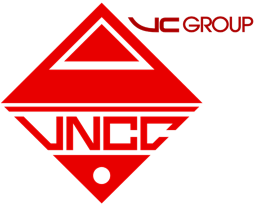

The Institute of Urban and Rural Construction was separated and the Institute was renamed the Institute of Housing & Public Construction Design.
The Institute was established in the context of social upheaval to market mechanism and multi-economic sectors. The operational model of the Institute also changed from the subsidy model to self-supporting model (architectural and construction services were added).
Residential construction then became a vital social task. Prefabricated concrete was developed and traditional house building methods was improved. The large prefabricated concrete houses samples at the Chem, Dao Tu and Xuan Mai concrete plants were mass-produced at the Thanh Xuan housing complex, Van Phuc Diplomatic Corps, and residence for foreign specialists on Da River Hydropower Project, Bim Son, Hoang Thach, Uong Bi and Pha Lai.
Photo: Awarding ceremony of the “Residence Design Competition” in 1986
The Institute also revised and modify dozens of design standards for mass-scale application, including housing and public works design, noise preventation, plumbing, indoor lighting…, structural design of houses built in traditionally method and precast panels, focusing on the structure status under the static and wind, earthquake.
On the other hand, the Institute designed many public facilities such as hospital buildings The Viet Soviet Friendship Hospital, the new Traditional Medicine Research Institute, The Central Eye Hospital, Hai Hung Hospital … educational projects, the cultural and sport works…
At the National Residential Design Competition in 1978, the Institute debuted a series of new designs, which was applied in various localities throughout the country for citizens after the war.
Our architects greatly improved in creating lively architectural ensembles. Works were phased in accordance with the financial condition of government. Planning for each unit and the whole work were focused on climate factors as well as creating aesthetic effect.
The Institute took part in managing and designing all crucial works in the area contiguity to Ba Dinh Square, namely Uncle Ho’s Mausoleum, Ba Dinh Hall, Ho Chi Minh Museum and the renovation of the Presidential Palace and the Ba Dinh Political Center. In 1978, the Institute was designated to colaborate with Soviet Union experts to design technical drawing and present architecture options of Ho Chi Minh Museum. After years of research and design, on Aug 31st 1985, the Museum construction was officially begun.
In December 1986, the Sixth National Party Congress launched a comprehensive reform. Renovation, sectoral economic development was encouraged.
The Institute could not depend on government and had to actively search for sources of work. In 1989, the Institute granted partial autonomy to its studios by providing them with their own seal to quickly respond to the market. The model was applied until 1997.
Photo: Viet Nam-Algeria Secondary School
For 15 years, Institute of Housing & Public Construction Design has carried out a great deal of researches and scientific projects, to modified and developed the construction industry standard system. The staff of the Institute devoted their time research, sharing professional experience…
The Institute’s contribution was recognized and awarded with three noble medals:
1980: Second Class Labor Medal
1985: First Class Labor Medal
1990: First Class Labor Medal
The first generation of architects and engineers in the Institute were pioneers who laid the groundwork for the country’s architectural design. Thirty years later, the 2nd generation followed the glorious tradition to scientificly research construction design, and prepare to emerge to the innovation path.
Typical projects
1 / Ho Chi Minh Museum
2 / Head Office of Voice of Vietnam
3 / University of Finance and Accounting
4 / 241 Hotel in Chem, Hanoi
5 / Hotel of MoC in Sam Son, Thanh Hoa